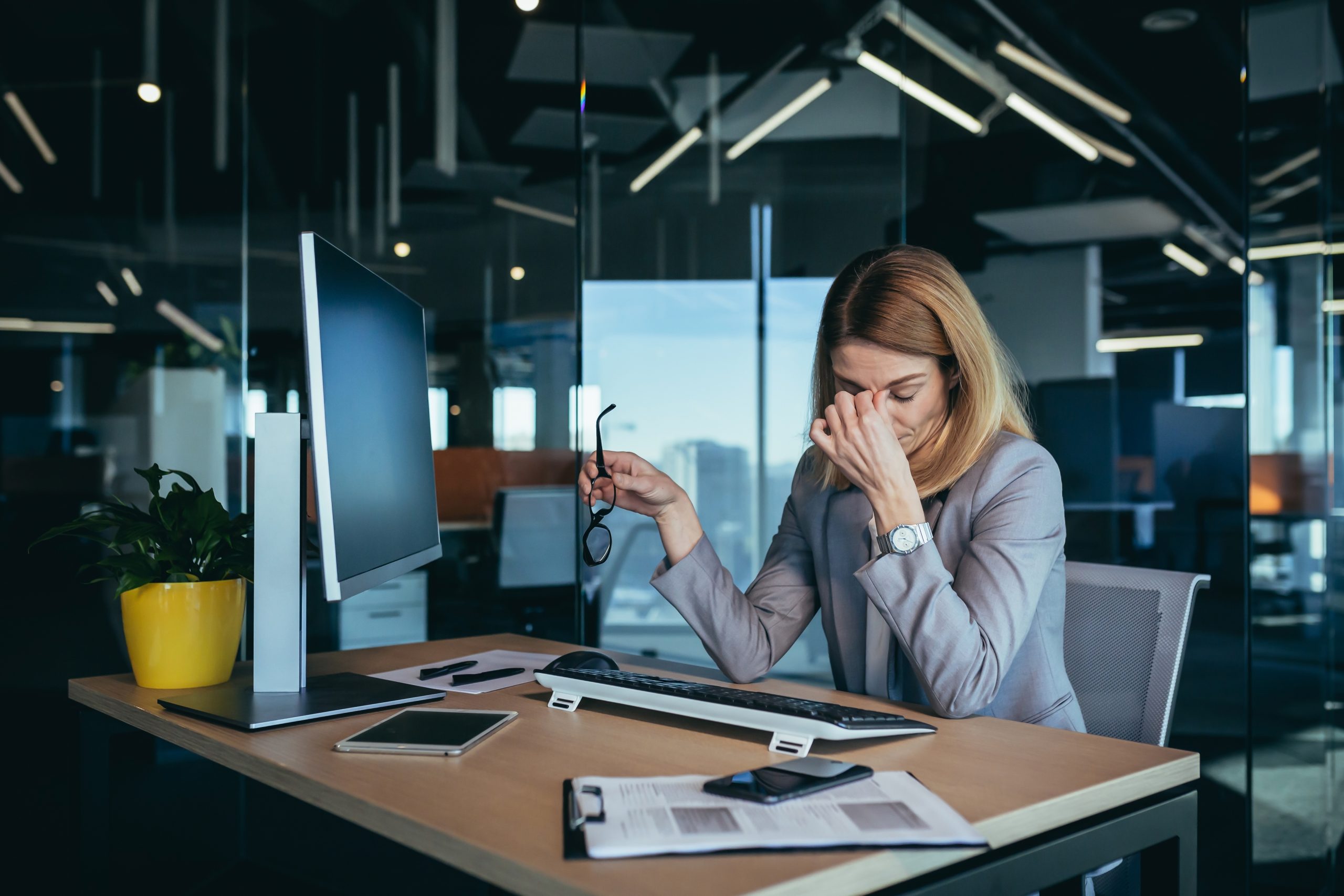10 Tips for Relieving Computer Eye Strain
Introduction:
In our digital age, spending long hours on the computer has become common place, but it often comes with the downside of eye strain. If you’re tired of red, dry, or irritated eyes after staring at your screen, here are ten practical tips to help alleviate computer eye strain.
1. Follow the 20-20-20 Rule:
- Every 20 Minutes: Set a timer or use your phone to remind yourself to take a break every 20 minutes. This regular pause helps prevent eye fatigue and strain associated with continuous screen use.
- Look at an Object 20 Feet Away: During your break, focus your gaze on an object located at least 20 feet away from you. This distance allows your eye muscles to relax and adjust to a different focal length.
- For at Least 20 Seconds: Maintain your focus on the distant object for a minimum of 20 seconds. This duration gives your eyes sufficient time to reset and reduce the strain caused by staring at a close-up screen.
2. Adjust Screen Settings:
3. Use Proper Lighting:
4. Blink Regularly:
5. Use the Right Eyewear:
6. Take Regular Breaks:
In addition to the 20-20-20 rule, take short breaks every hour. Stand up, stretch, and focus on distant objects to give your eyes a rest.
7. Adjust Text Size and Contrast:
Enlarge text size and adjust contrast settings to make text more readable. Avoid straining to read small fonts, which can contribute to eye discomfort.
8. Lubricating Eye Drops:
9. Anti-Glare Screen Protectors:
Anti-glare screen protectors are transparent overlays designed to diminish reflections and glare on your device’s screen, providing a more comfortable viewing experience and reducing eye strain. These protectors typically have a matte finish that diffuses light, minimizing the impact of direct light sources and reflections. By reducing glare, these protectors help to enhance visibility, particularly in well-lit environments. They are easy to install and can be compatible with various devices such as laptops, monitors, and tablets. Anti-glare screen protectors not only improve visual comfort during prolonged screen use but also contribute to maintaining overall eye health by mitigating the factors that can cause eye strain and discomfort. Whether you’re working in a brightly lit office or spending extended hours on your computer, these protectors serve as a practical solution to create a glare-free and eye-friendly screen environment.
10. Create an Ergonomic Workspace:
To reduce eye strain during prolonged computer use, it’s essential to create an ergonomic workspace that promotes comfort and minimizes physical stress on your eyes and body. Start by positioning your monitor at eye level, ensuring it is about an arm’s length away. This prevents the need to tilt your head up or down, reducing neck strain. Invest in an adjustable chair that provides proper lumbar support and allows you to sit with your feet flat on the floor. Additionally, maintain a comfortable and relaxed posture by positioning your keyboard and mouse within easy reach. Consider using an anti-glare screen protector to minimize reflections and glare. Adequate lighting is crucial; position your desk to avoid direct glare from windows or overhead lights, and use task lighting to illuminate your workspace evenly. Regular breaks, incorporating the 20-20-20 rule, coupled with ergonomic adjustments, contribute to a workspace that fosters eye health and overall well-being.
Conclusion:
Taking steps to reduce computer eye strain is essential for maintaining eye health in our digital world. By incorporating these simple yet effective tips into your routine, you can enjoy prolonged screen time with less discomfort. If symptoms persist, consult with an eye care professional for personalized advice and solutions. Remember, a healthy balance between screen use and eye care is crucial for long-term well-being.
World Eye Care Foundation’s eyecare.live brings you the latest information from various industry sources and experts in eye health and vision care. Please consult with your eye care provider for more general information and specific eye conditions. We do not provide any medical advice, suggestions or recommendations in any health conditions.
Commonly Asked Questions
Yes, children can experience eye strain. Monitor their screen time, follow preventive measures, and schedule regular eye check-ups.
Ensure proper lighting, screen settings, and ergonomic furniture for a comfortable and eye-friendly workspace.
Omega-3 fatty acids and vitamins A, C, and E may support eye health. Consult a doctor before taking supplements.
Yes, sitting too close may cause eye strain. Maintain an arm’s length distance for optimal comfort.
Yes, inadequate lighting can contribute to eye strain. Ensure proper lighting for a comfortable screen experience.
Yes, simple eye exercises like palming and focusing can help relax eye muscles during screen breaks.
Yes, prolonged screen use may contribute to headaches. Proper screen settings and breaks can help alleviate this.
Aim for a 20-second break every 20 minutes to reduce eye strain during prolonged screen activities.
Blue light filters can reduce eye strain, but their necessity varies. Consider using them for prolonged screen use.
Prolonged strain may lead to discomfort, but permanent damage is rare. Consult an eye specialist if symptoms persist.
news via inbox
Subscribe here to get latest updates !







